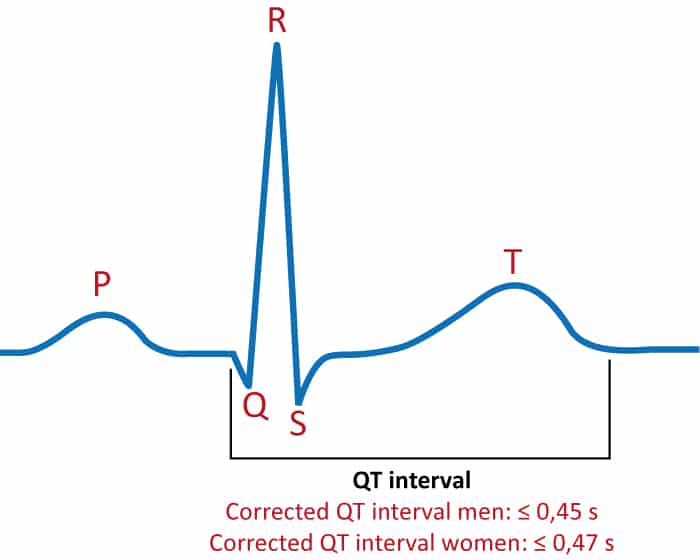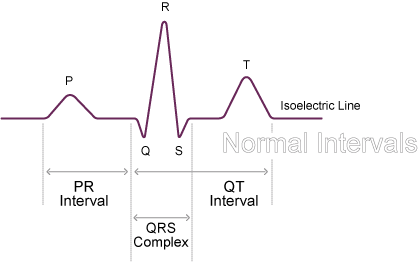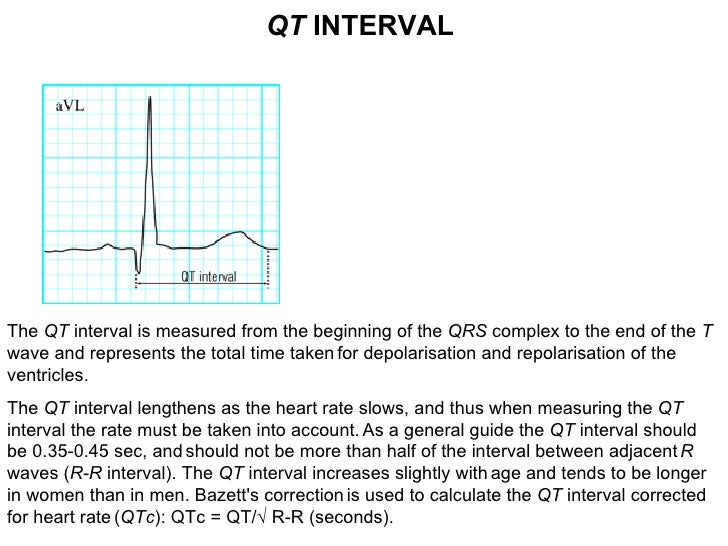
The mutations have autosomal inheritance with reduced penetrance.

In general, torsade de pointes develops at QTc intervals greater than 490 milliseconds. The longer the QT interval the greater the risk of developing torsade de pointes. The risk of developing torsade de pointes (polymorphic ventricular tachycardia) is evident in both congenital and acquired QT prolongation. Because each of these factors (medications, electrolyte disorders and bradycardia) are all common, but only appear to cause QT prolongation in some individuals, it is thought that there has to be an underlying genetic susceptibility to develop acquired long QT syndrome. Such hereditary information is a strong predictor of sudden cardiac death.Īcquired long QT syndrome is caused by medications (amiodarone, sotalol, procainamide), hypokalemia, hypomagnesaemia and pronounced bradycardia. Importantly, individuals with congenital QT prolongation frequently report occurrences of unexplained syncope or cardiac arrest in the family. It is estimated that the prevalence of congenital QT prolongation is individuals in the population (prevalence figures from Italy). Three types of LQTS (LQT1, LQT2 and LQT3) represent roughly 90% of all cases of congenital LQTS. Fortunately, this mortality figure may be reduced to 1% over 15 years of follow-up with the use of evidence-based treatments. Among untreated patients who have experienced one episode of syncope, 20% die within 1 year. Congenital QT prolongation is a very serious condition with high mortality. More than 10 types of congenital prolongation of the QT interval have been discovered. Causes of long QT intervalĪ long QT interval is either congenital (genetic) or acquired.Ĭongenital long QT syndrome is caused by mutations in cardiac ion channels. If this occurs, i.e if a person with a long QT interval experiences such ventricular arrhythmias, the condition is referred to as long QT syndrome (LQTS). QTc intervals exceeding these limits may cause torsade de pointes.

The upper reference limit for QTc interval is 460 ms in males and 470 ms in females.

Calculate the mean QT interval for each lead and use the longest QT interval obtained.The QT interval should be measured in 3 to 5 consecutive beats in leads II, V5 and V6.The QT interval should be measured manually, from the beginning of the QRS complex to the end of the T wave.
QT INTERVAL NORMAL HOW TO
How to measure the QT intervalĮxpert opinion suggests that QT intervals should be measured as follows ( Anderson et al):

Such QTc intervals are derived by all modern ECG machines and the formulas used are more precise than those listed above. It is recommended that whenever the QTc interval is prolonged, it should be verified manually. It is recommended that the automatic (machine) calculation of corrected QT interval be used. For patients with bundle branch blocks, the corresponding figure is >500 ms. Note that a QTc interval >480 is always considered pathological. Reference intervals for QTc duration according to Bazett’s formula. Bazett’s formula over-adjusts at higher heart rates and under-adjusts at lower heart rates. For example, Bazett’s formula is only suitable in adults with a heart rate between 60 and 90 beats per minute. However, all above-listed formulas were developed many decades ago and they have multiple drawbacks. Bazett’s formula is the most commonly used formula.


 0 kommentar(er)
0 kommentar(er)
